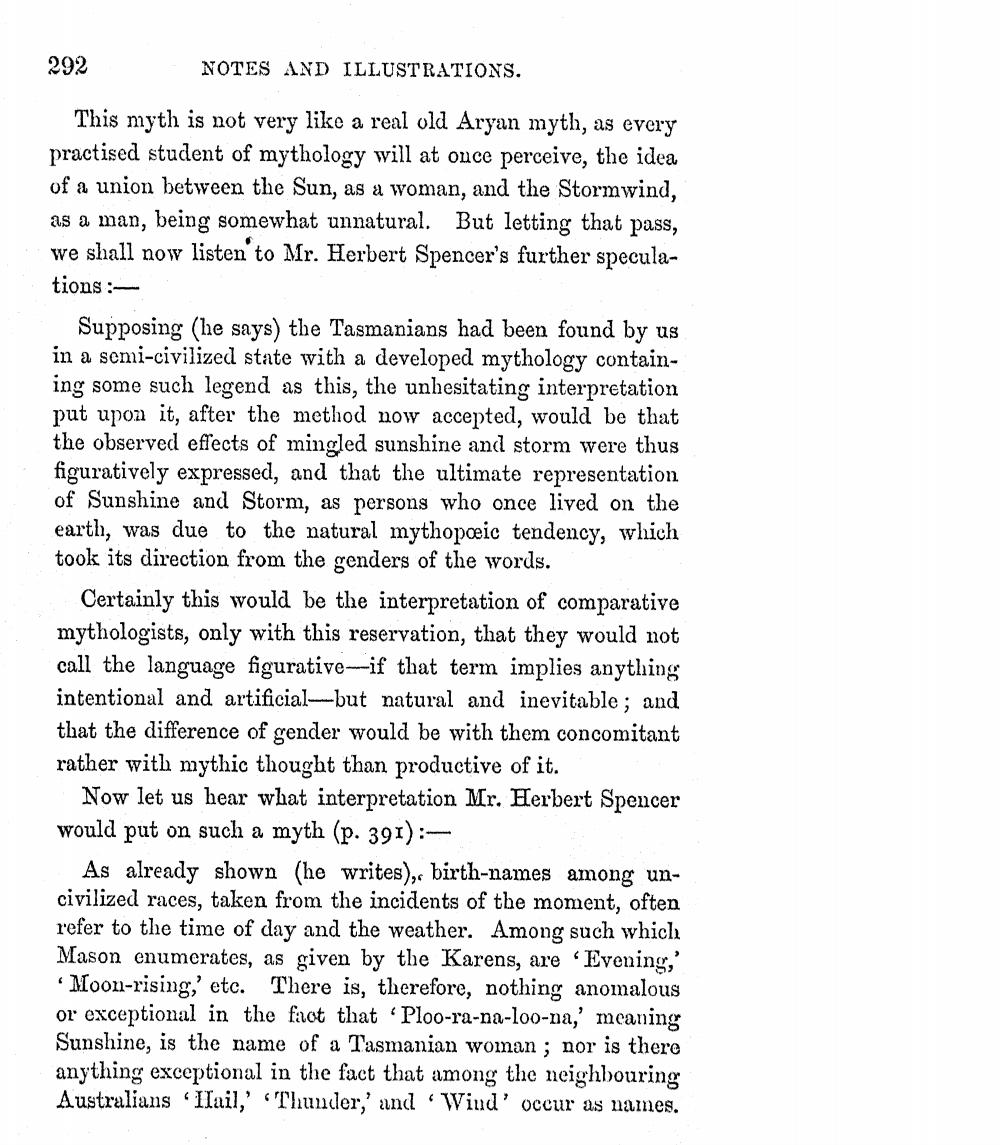________________
292
NOTES AND ILLUSTRATIONS.
This myth is not very like a real old Aryan myth, as every practised student of mythology will at once perceive, the idea of a union between the Sun, as a woman, and the Stormwind, as a man, being somewhat unnatural. But letting that pass, we shall now listen to Mr. Herbert Spencer's further speculations :
Supposing (he says) the Tasmanians had been found by us in a semi-civilized state with a developed mythology containing some such legend as this, the unhesitating interpretation put upon it, after the method now accepted, would be that the observed effects of mingled sunshine and storm were thus figuratively expressed, and that the ultimate representation of Sunshine and Storm, as persons who once lived on the earth, was due to the natural mythopoic tendency, which took its direction from the genders of the words.
Certainly this would be the interpretation of comparative mythologists, only with this reservation, that they would not call the language figurative-if that term implies anything intentional and artificial—but natural and inevitable; and that the difference of gender would be with them concomitant rather with mythic thought than productive of it.
Now let us hear what interpretation Mr. Herbert Spencer would put on such a myth (p. 391):
As already shown (he writes), birth-names among uncivilized races, taken from the incidents of the moment, often refer to the time of day and the weather. Among such which Mason enumerates, as given by the Karens, are "Evening,'
Moon-rising, etc. There is, therefore, nothing anomalous or exceptional in the faot that Ploo-ra-na-loo-na,' meaning Sunshine, is the name of a Tasmanian woman ; nor is there anything exceptional in the fact that among the neighbouring Australians IIail,' Thunder,' and Wind' occur as names.




